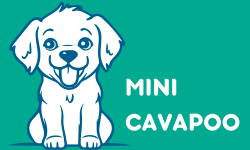Mini Cavapoo: Everything You Want To Know About Dog Breeds

Introduction
The Cavapoo is a mix of a Cavalier King Charles Spaniel and a Poodle. It has become popular as a special dog over the last decade. Typically weighing 20- 35 pounds, Cavapoos are recognized for their smartness, playful behavior, and loving personality.
Within the Cavapoo breed is a size variation – the standard Cavapoo and the miniature or “mini” Cavapoo. It represent the smaller end of the Cavapoo spectrum, typically maxing out at around 20 pounds. Their diminutive size makes them an excellent choice for small homes or apartments.
This comprehensive guide will explore everything you need to know about miniature Cavapoos, from their appearance and temperament to care, health, training, and finding a reputable breeder. As a dog enthusiast with over a decade of experience, I’ll share my insights to help you decide if a Cavapoo mini is the right pet for you!
Mini Cavapoo Origins
To understand the smallest Cavapoo, it’s helpful to learn about the history of its parent breeds.
The Cavalier King Charles Spaniel
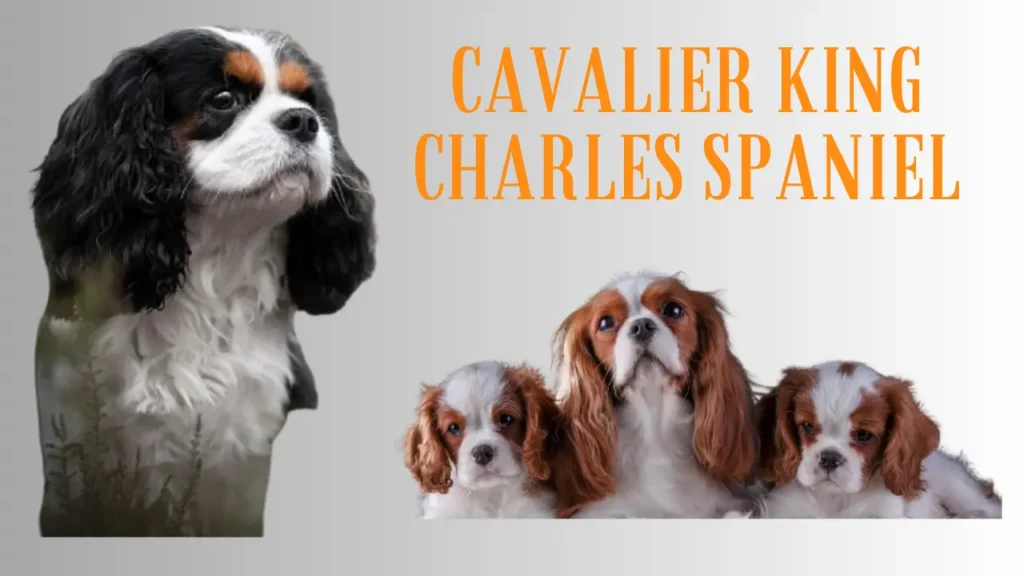
The Cavalier King Charles Spaniel first came from the United Kingdom and was bred primarily as a companion dog for nobility. Their name comes from King Charles II, who adored the breed.
Cavaliers have a delightful temperament – gentle, playful, and eager to please. They enjoy being with people and are great as therapy dogs. In terms of appearance, Cavaliers have a smooth, silky coat, droopy ears, and large round eyes that give them an expressive, mellow look.
Today, Cavaliers remain popular family pets. However, they need frequent grooming and might face specific health problems like mitral valve disease.
The Poodle
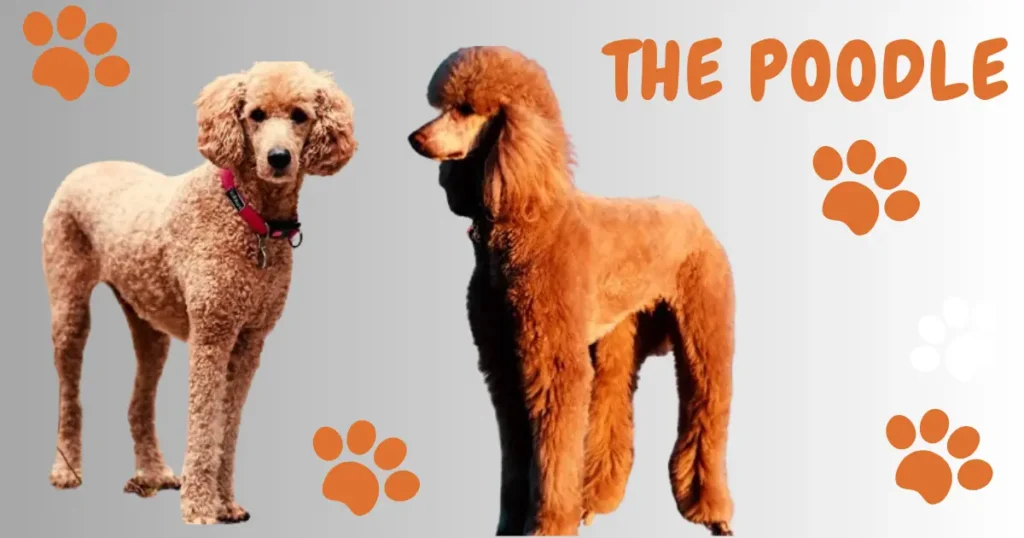
Poodles first appeared in Germany, created as dogs to bring back things from the water. While swimming, their non-shedding coats were intentionally left long to provide warmth and protection.
Over time, Poodles became popular circus performers and eventually transitioned into companion pets. Many think they’re smart and easy to teach among the cleverest dogs.
Poodles are found in three different sizes: standard, miniature, and toy. They are athletic, highly energetic dogs that require daily exercise and stimulation. Besides their signature curly coats, Poodles are known for their alert, attentive attitude.
Breeders aimed to create a friendly, adaptable hybrid dog suitable for urban living environments by crossing Cavaliers and Poodles. The result was the cavapoo – bringing together the good qualities of both kinds of dog parents.
Comparative Overview Between Cavapoo and Mini Cavapoo
The Cavapoo comes in both standard and miniaturized sizes. While similar in temperament, there are some notable differences between full-sized Cavapoos and Mini Cavadoodle regarding size, grooming needs, activity levels, and health considerations. Let’s understand their differences through the table given below:
Feature
Cavapoo
Mini Cavapoo
Size
16 -18 inches tall, 20 – 35 lbs
12 -16 inches tall, 13 – 20 lbs
Coat Type
Wavy or curly, shedding varies
Thicker curlier coat, low shedding
Temperament
Affectionate, playful, outgoing
Intelligent, gentle, friendly
Activity Level
Moderate, require daily walks
Mellow, lower exercise needs
Grooming
Moderate grooming needed
Easier to groom due to smaller size
Responsive, eager to please
Highly trainable
Living Spaces
Adaptable, can live in apartments
Excellent for apartments and condos
Family Dog
Great family companion
Wonderful family pet
Health Issues
Heart problems, ear infections
Less health issues due to hybrid vigor
Let’s have a Look at Mini Cavapoo Generations
The Cavapoo is a mix of a Cavalier King Charles Spaniel and a Poodle, and it’s becoming a liked type of dog. There are several filial generations of the Cavapoo, from first-generation crosses to multigenerational Cavapoos, each with slightly different traits and breeding aims. Let’s discuss them in detail.
F1 Mini Cavapoo
The F1 tiny Cavapoo is the first kind of Cavapoo, made by mixing a small Poodle with a special kind of dog called a Cavalier King Charles Spaniel. As a first-generation cross, the F1 often demonstrates hybrid vigor, leading to better health. F1 Mini Cavapoos typically have a wavy, teddy bear-like coat and appearance.
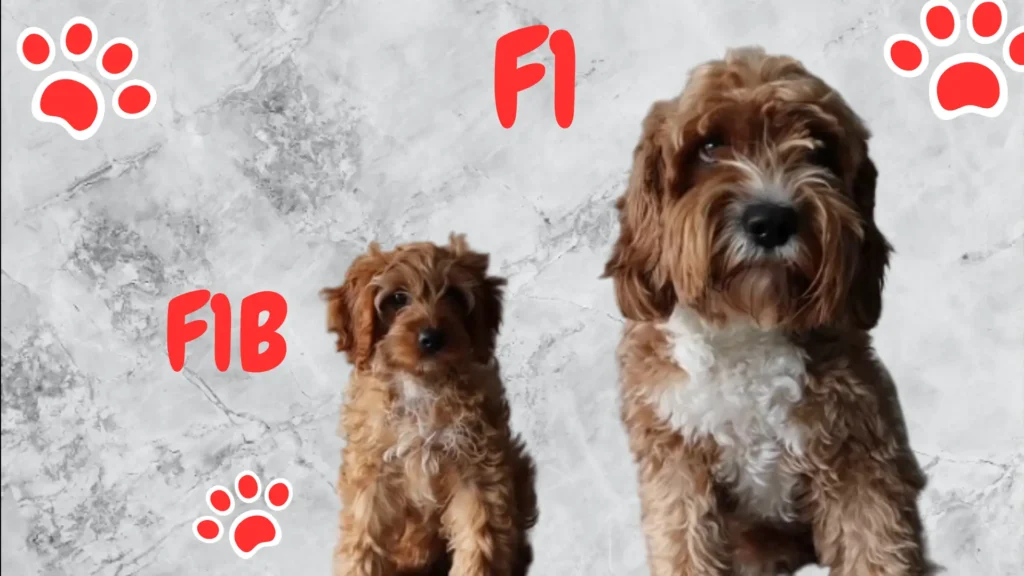
F1b Mini Cavapoo
The F1b Mini Cava poo is the second filial generation achieved by backcrossing an F1 with a purebred Miniature Poodle parent. This introduces more Miniature Poodle genes and enhances the hypoallergenic qualities of the coat. The F1b is a popular choice for those with pet-related allergies.
F1bb Mini Cavapoo
Breeding an F1b Cavapoo Mini with a Miniature Poodle produces the F1bb generation. These dogs are predominantly Poodles with a curlier, more allergy-friendly coat. The F1bb is sought after by allergy sufferers looking for a low-shedding hybrid.
F2 Mini Cavapoo
F2 Mini Cavapoos result from crossing two F1 Cavapoo parents. The F2 maintains a balanced mix of Poodle and Cavalier King Charles Spaniel traits, inheriting features from both grandparent breeds. F2 breeders aim for greater control over coat colors/types.
Multigene Mini Cavapoo
After several generations of Cavapoo-to-Cavapoo breeding, the resulting dogs are often called “multigen” Cavapoos. Multigen breeding aims to solidify the most desirable Cavapoo traits over multiple generations of selective breeding.
Mini Cavapoo Size and Appearance
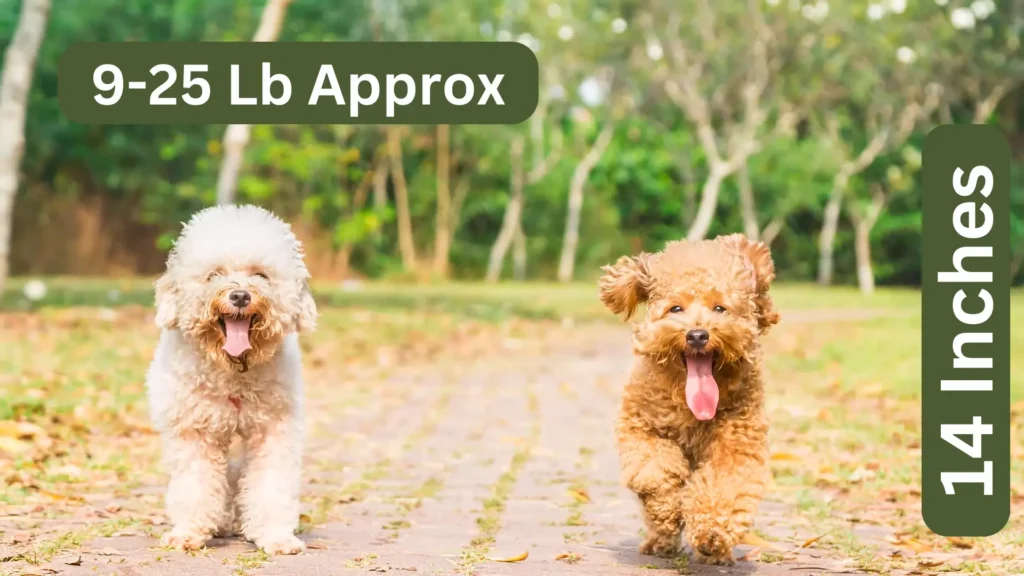
One of the defining features of miniature Cavapoos is their small stature. On average, mini Cavapoos size is between 13 and 20 pounds and 12 to 16 inches tall at the shoulder. Males and female dogs are usually about the same size.
In terms of general appearance, mini Cavapoos share many of the same physical attributes as the standard Cavapoo, just on a smaller scale:
Head and Ears
A mini cava poo’s head is rounded with a moderate stop. The ears hang close to the head, resembling a Cavalier’s.
Muzzle
Mini cava poos inherit a shorter muzzle from their Cavalier lineage. The muzzle is tapered but still slightly elongated
Eyes
Tiny Cavapoos have large, round, protruding eyes that give them an alert expression reminiscent of a Poodle’s. The color of their eyes might be different, like shades of hazel, brown, or blue.
Body
small Cavapoos have a sturdy, square-proportioned body balanced by fairly short legs.
Tail
The tail of a little Cavapoo full grown is long and feathery, typically carrying over the back in a plume.
However, when it comes to coats, there can be greater variation amongst smallest Cavapoos:
Coat Texture
Miniature Cavapoos can inherit the Poodle’s tight curls or have a silkier, wavier coat from their Cavalier ancestry. Coat texture can land anywhere between the two extremes.
Coat Color
Cavapoos mini coats come in solid, single colors or with mixed markings like parti, tri-color, Blenheim (chestnut and white), or merle variations. Common colors include black, white, chestnut, apricot, red, and brown.
Cavapoos mini have a pleasantly soft, cuddly appearance that matches their affectionate personality as a hybrid companion breed.
Temperament and Personality Traits
One of the main reasons mini cava poos have surged in popularity is because of their wonderful temperament. Tiny Cavapoos inherit the best personality traits of the Cavalier and Poodle to create a family-friendly hybrid.

Here’s an overview of a typical mini cava poo’s temperament:
Affectionate
Mini cava poos form extremely strong bonds with their owners. They crave human interaction and plenty of petting and cuddling.
Playful
With their energetic Poodle ancestry, mini Cavadoodles love to play. They enjoy engaging in games and especially relish interactive playtime with their owners.
Intelligent
Thanks to their Poodle parentage, mini cava poo are bright dogs able to easily pick up commands and tricks. But they aren’t overly headstrong.
Friendly
The smallest Cavapoos get along wonderfully with people of all ages. They rarely demonstrate shyness or aggression when properly socialized.
Calm
Despite their playful side, petite Cavapoos are gentle and docile indoors. They enjoy lounging with their owners and are happy with not too much running around.
Adaptable
Mini Cavapoos thrive in various living situations, from houses with big yards to city apartments. They can adjust to their environment.
For experienced and first-time dog owners alike, it’s easy to see why the miniature Cavapoo temperament makes them such an exceptional pet. Their eagerness to please, paired with an affectionate, upbeat attitude, is hard to resist!
Mini Cavadoodle Care and Maintenance
While the smallest Cavoodle make wonderful companion pets, they do require a certain level of care and maintenance. As a prospective tiny Cavapoo owner, be prepared to provide for the following basic needs:
Exercise
Cavapoos mini have a moderately energetic exercise requirement. They need around 30-60 minutes of activity per day. Mini Cavapoo owners should plan to:
Mental stimulation is also important for mini Cavapoos to prevent boredom and destructive behaviors. Food puzzle toys and obedience training are great ways to engage their minds.
Grooming
Those with a curlier Poodle coat require professional grooming every 4-6 weeks. Their hair continuously grows and needs regular trims to keep their coat manageable. In between appointments, daily brushing helps prevent painful mats and tangles.
Depending on their coat type, tiny Cavapoos can be lower or higher maintenance regarding grooming needs.
Mini cava poos with a smooth, silky coat are less maintenance. Occasional brushing (2-3 times per week) and a bath every few months are usually sufficient. Trim the facial hair around the eyes as needed.
Nail clipping, ear cleaning, and dental care are part of the regular grooming routine for all cute little Cavapoos. Introduce these procedures early on to get smallest Cavapoos comfortable with handling.
Training
Thanks to their people-pleasing nature, Cavapoos mini are simple to teach using nice and encouraging methods. Start socialization and training early to build good behaviors.
Tiny Cavadoodles thrive on praise and food rewards. Housetraining is simpler for mini cava poos when on a consistent feeding and potty break schedule. Be patient and consistent during training of miniature Cavapoos aim to get it right!
Basic obedience, crate training, and socialization are musts. The smallest Cavapoos also enjoy learning tricks and competing in canine sports like agility, which provide mental stimulation.
Feeding
Follow your veterinarian’s guidelines to feed your tiny Cavapoo a nutritionally balanced diet. Deciding how much to feed them depends on how much they move around, how old they are, and whether they’re healthy.
On average, mini Cavapoos need 1/2 to 1 cup of high-quality dry dog food split into two daily meals. Purchase an appropriate kibble for your mini cava poo’s size and life stage.
Monitor treats, avoid table scraps, and stick to scheduled feeding times. Since petite Cavapoos are prone to weight gain, don’t overfeed. Provide fresh water at all times.
Companionship
The smallest Cavapoos thrive on human interaction and companionship. Their perfect home is where someone is around most of the day to provide affection, attention, and playtime.
Mini Cavapoos may feel upset if they’re alone and have separation worries. If introduced properly, they can also be good friends with other pets. But they prefer being with their people above all else!
Providing adequate exercise, grooming, training, and companionship will ensure your mini Cavapoo lives a comfortable, enriched life. These little creatures reward their owners with unwavering loyalty and love when their needs are consistently met.
Mini Cava poo Health and Care
In general, Cavapoos mini are fairly healthy dogs thanks to hybrid vigor. Like any breed, they might sometimes have certain health problems you should know about. Here’s an overview of tiny Cavapoo health concerns:
Lifespan
The typical lifespan of a healthy small Cavapoo is 10-15 years. Provide excellent preventative and routine veterinary care to help your mini Cavadoodle reach full life expectancy.
Common Issues
Ear Infections
The smallest Cavapoos’ floppy ears trap moisture. Combined with allergies, this makes ear infections more likely. Check and clean your ears regularly.
Patellar Luxation
Loose knee joints are caused by malformed hind legs. Mild cases can be managed with exercise limitations, or surgery may be required in moderate to severe instances.
Heart Disease
Tiny Cavapoos can inherit a predisposition for mitral valve disease from their Cavalier lineage. Have a veterinary cardiologist evaluate their heart health.
Obesity
Weight gain is common if mini cava poos are overfed. Measure food portions and limit treats.
Allergies
The dog parents of these little ones may sometimes have problems with their skin and be sensitive to certain foods. Manage allergies through diet, medications, or immunotherapy.
Take your dog to the vet regularly to catch any possible health problems early. Discuss recommended health screens for your mini Cavapoo with your veterinarian. Purchase pet insurance to offset costs should an illness or injury occur.
Is the Hypoallergenic Trait Present in Mini Cava poos?
Tiny Cavapoos are not completely non-allergic dogs but tend to shed little and make less dander. This makes them good for many people with allergies. Their Poodle parents give them qualities that are friendly for allergies. Later generations like the F1b and F1bb with more Poodle genes are better for allergies than early Cavapoos. Proper washing and grooming also lower the things that cause allergies.
Mini Cavadoodle are better for allergies than other dogs, especially later generations with more Poodle.
Grooming Safety
Take steps to make grooming safe and comfortable for your miniature cava poo:
By teaching the smallest Cavapoos to enjoy grooming and using proper techniques, you can avoid making it a stressful experience. Always reward and praise them for their cooperation!
Comparing Toy Cavapoos and Mini Cava poos
The Cavapoo breed offers two popular size varieties, the Toy Cavapoo and the slightly larger petite Cavapoo. While the two share many traits common to all Cavapoos, some key differences exist between Toy and Mini Cava poos in size, activity needs, and recommended living spaces. Let’s try to understand their differences through the table given below:
Features Comparison
Feature
Toy Cavapoo
Mini Cavapoo
Size
Very small, bred from Toy Poodles
Slightly larger than Toys, bred from Miniature Poodles
Weight
7-13 lbs
13 to 20 lbs
Height
9-12 inches
12 to 16 inches
Activity Level
Lower energy, less exercise needed
Moderate energy, daily walks recommended
Temperament
Affectionate, gentle, lapdog tempo
Outgoing, playful, robust tempo
Training
Eager to please, highly trainable
Intelligent and trainable
Space Needs
Excellent for apartments and small dwellings
Adaptable, good for most living spaces
Grooming
Requires regular brushing and clipping
Low-shedding coat needs consistent grooming
Health
Prone to heart issues and luxating patellas
Typically robust health
Tips for Training Cavapoo Mini
The intelligence and eagerness to please tiny Cavapoos make training them a delight compared to other breeds. Here are some top tips for successfully preparing your miniature Cavapoo:
Use Positive Reinforcement
Petite Cavapoos like learning when you use nice and encouraging ways to teach them. Praise, treats, and play are the best rewards. Never use punishment like yelling or roughness – it will damage your bond.
Establish a Routine
Consistency helps mini cava poos learn routines faster. Create a plan for when to give food, take them outside, teach them things, and have fun with them.
Practice Early Socialization
Between 8 and 16 weeks old, let your tiny cava poo meet many people, go to different places, hear different sounds, and have different experiences. This builds confidence and friendliness.
Keep Training Sessions Short
Miniature cava poos have shorter attention spans. When teaching, keep it short, around 10-15 minutes at most, and finish with something good to make them happy. Try again later once their energy is recharged.
Make It Fun!
Incorporate play and variety into training sessions to prevent boredom. Switch up locations, toys used, and types of treats. Learning new tricks keeps mini cava poos engaged.
Be Patient
Some skills may take longer to master. If your mini Cavapoo is struggling, go back to basics and build up gradually. Avoid frustration.
Use a Crate
Some skills may take longer to master. If your mini Cavapoo is struggling, go back to basics and build up gradually. Avoid frustration.
Final Thoughts
With their friendly personality, moderate activity needs, and eager-to-please nature, it’s no wonder tiny Cavapoos have become a sought-after hybrid dog breed. When purchased from a responsible breeder and properly cared for throughout their lifespan, miniature Cavapoos make wonderful companions for individuals, couples, and families. Their small size makes them an ideal pet for apartment living, too. For those seeking a loyal, affectionate pup that enjoys being close to their people, the mini cava poo perfectly fits the bill. With appropriate exercise, training, and veterinary care, smallest Cavapoos will thrive and hold a special place in their owner’s hearts for years to come.
